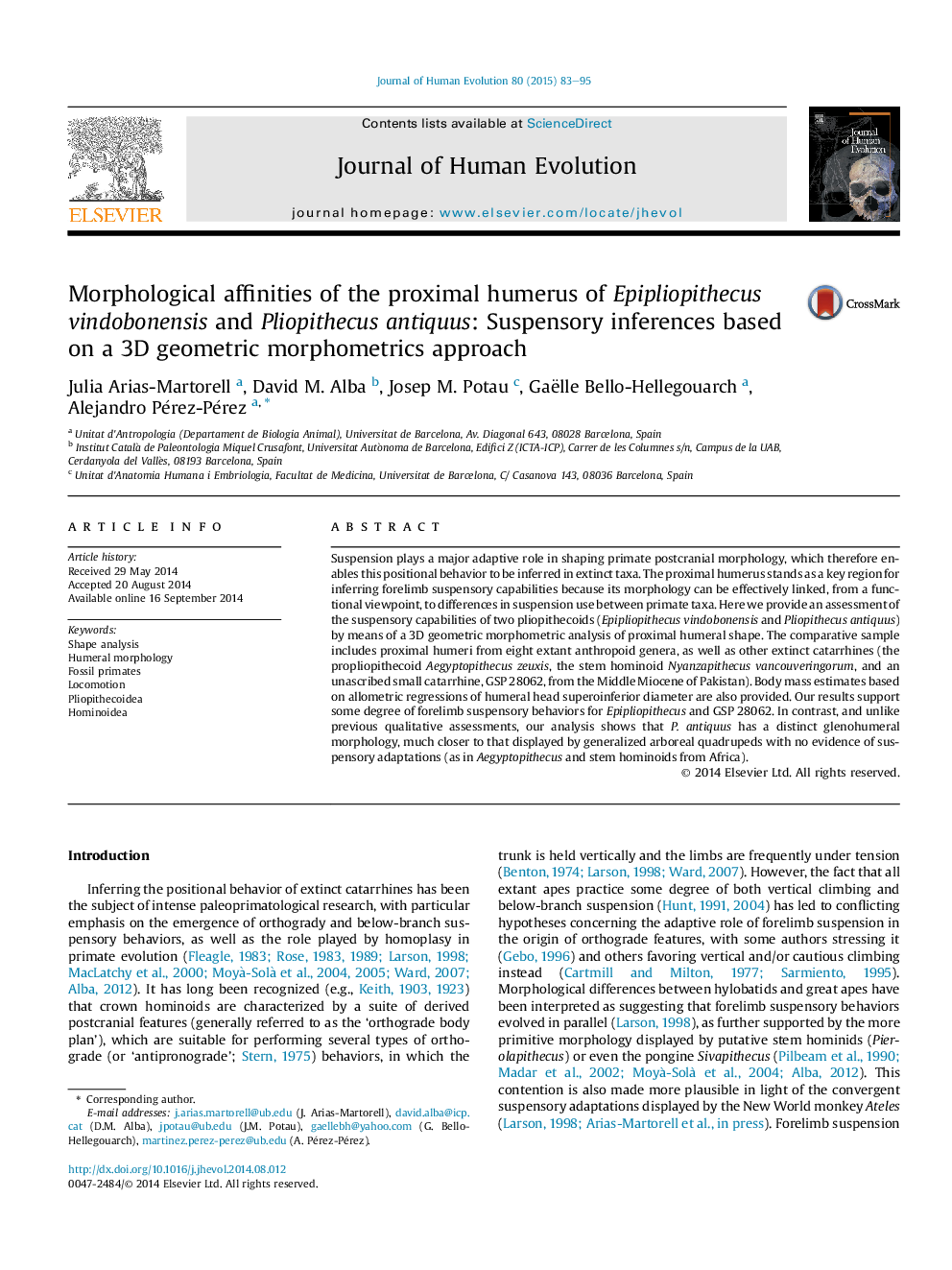| کد مقاله | کد نشریه | سال انتشار | مقاله انگلیسی | نسخه تمام متن |
|---|---|---|---|---|
| 4555927 | 1628169 | 2015 | 13 صفحه PDF | دانلود رایگان |

Suspension plays a major adaptive role in shaping primate postcranial morphology, which therefore enables this positional behavior to be inferred in extinct taxa. The proximal humerus stands as a key region for inferring forelimb suspensory capabilities because its morphology can be effectively linked, from a functional viewpoint, to differences in suspension use between primate taxa. Here we provide an assessment of the suspensory capabilities of two pliopithecoids (Epipliopithecus vindobonensis and Pliopithecus antiquus) by means of a 3D geometric morphometric analysis of proximal humeral shape. The comparative sample includes proximal humeri from eight extant anthropoid genera, as well as other extinct catarrhines (the propliopithecoid Aegyptopithecus zeuxis, the stem hominoid Nyanzapithecus vancouveringorum, and an unascribed small catarrhine, GSP 28062, from the Middle Miocene of Pakistan). Body mass estimates based on allometric regressions of humeral head superoinferior diameter are also provided. Our results support some degree of forelimb suspensory behaviors for Epipliopithecus and GSP 28062. In contrast, and unlike previous qualitative assessments, our analysis shows that P. antiquus has a distinct glenohumeral morphology, much closer to that displayed by generalized arboreal quadrupeds with no evidence of suspensory adaptations (as in Aegyptopithecus and stem hominoids from Africa).
Journal: Journal of Human Evolution - Volume 80, March 2015, Pages 83–95